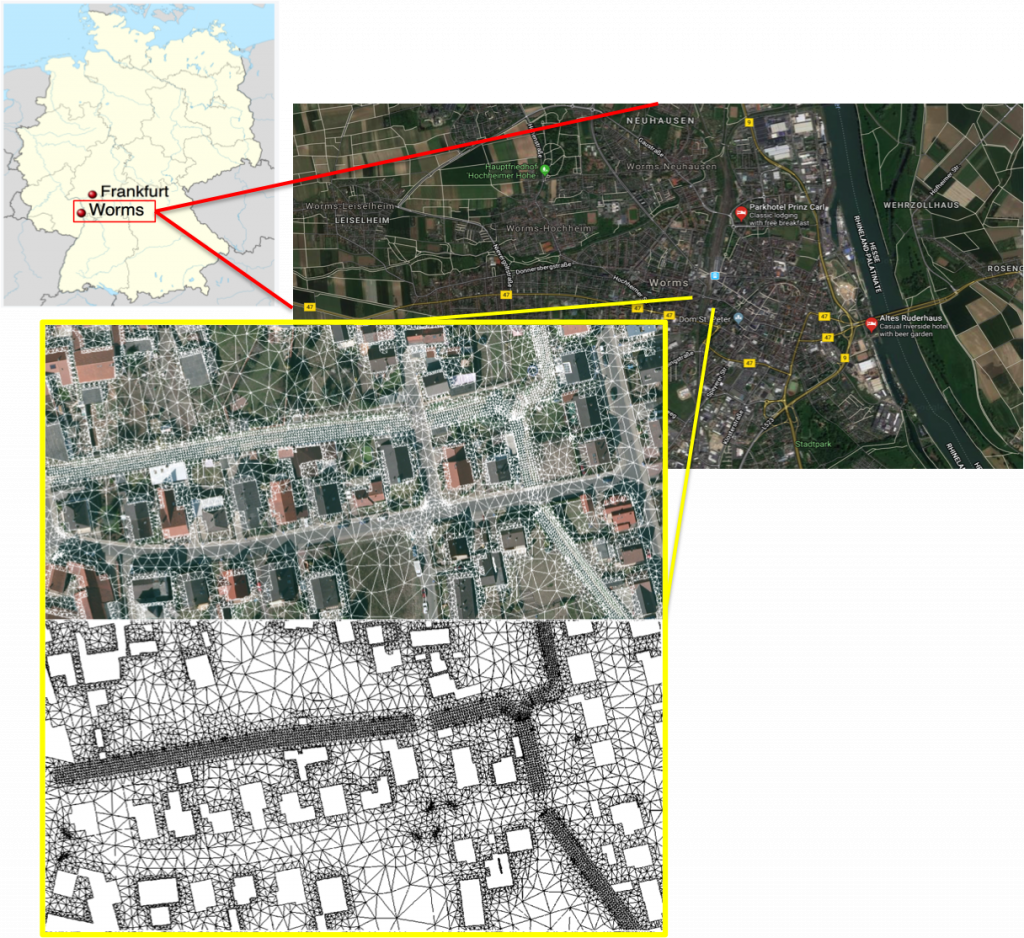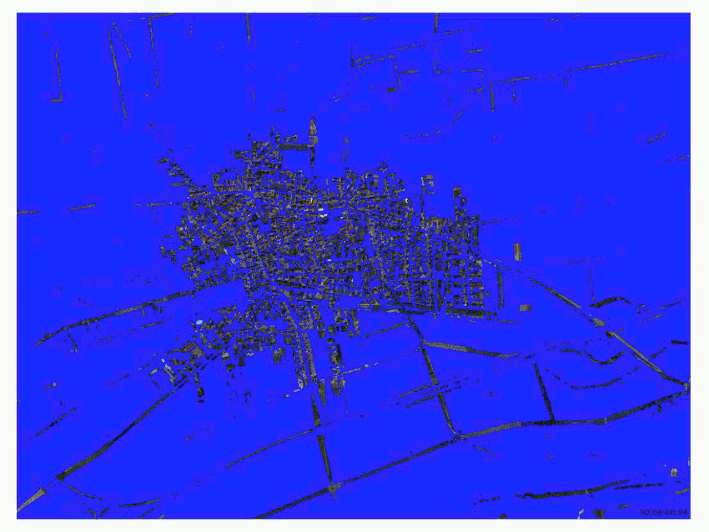
This is the result of a partnership with the German SME BGS IT&E. The objective of this transfer action is to assist the company in the implementation of a shallow water hydrodynamic module based on a simplified variant of the explicit residual distribution schemes developed in the team.
The final aim of the company is to provide Germany with a modern fast computational model to perform urban flood hazard prevention. To this end, several closure and sub-grid models have been added to the standard shallow water equations. In particular, a 2-way coupling with sub-models for both the sewage system (Bernoulli-type models), and unresolved structures (pressure and mass patches).

The model is fully parallel (domain decomposition + MPI) and some added efficiency is currently being added by means of local time stepping techniques, compensating for the high variability of mesh sizes in the computational domains in typical applications.
As an example of a typical application we report here some of the results obtained for flash flood simulations in the city of Worms, in the German Rhineland-Palatinate region. A model of the city has been discretised in full detail with an unstructured mesh of 14million nodes, allowing to resolve most of the relevant structures. The mesh has been used with the model developed to study several flash flood configurations, involving different durations and intensities of rainfalls.

The animation shows the typical time dependent evolution of the water depth provided by the model. Using a set of simulations performed for different rainfall parametrizations, flooding maps have been produced and presented. On December 2nd 2017 these results have been presented during a public audition in the city, aiming at raising the population’s awareness on the risks of foods, and on the importance of proper forecasting in the development of hazard reduction policies.

